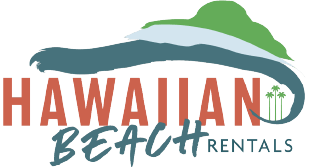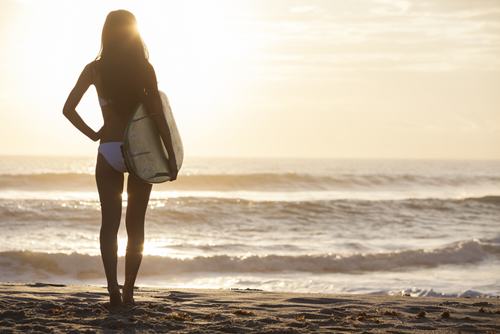Considering catching a wave for the first time on your trip to Hawaii? There's no better place in the world to learn how to surf: Take a lesson from one of the instructors along Hawaii's great surfing beaches, and you're sure to get the hang of it in no time. Most Hawaiian surf instructors come from generations of expert surfers, so you're in great hands. Here are five tips to keep in mind when you're heading out to ride your first wave:
1. Use a big board
When it comes to your surfboard, think long and wide. A board with more surface area is going to have more stability. This means it will be far easier to stay upright. If you're renting a board, make sure to let the rental company know you're just starting off. The workers there should be able to help you find a board that's the perfect size for your height and ability level. Although you might be tempted to go for a shorter board, err on the side of length – short boards are designed for sharp turns and maneuverability, not a beginner's level of control.
2. Start small
Dreaming of catching a huge wave? If you fall in love with surfing and decide to get into the sport past your vacation, you might do just that! However, most trips aren't exactly long enough for you to try out bigger swells. When you're just getting started, you need to ride waves that are appropriate for your skill level. Find a beach that's known to be good for first-time surfers, and don't try to surf in a more advanced area. Not only will you put yourself in danger at a more advanced beach, but you're likely to create a dangerous situation for the experienced surfers as well.
3. Stand confidently
Getting onto your board is arguably the most important part of surfing, but it can also be the trickiest part for beginners. Standing up on the board can be a little bit intimidating, especially when you're moving through the water. That's why you need to practice popping onto your board on dry land, before you ever bring the board into the ocean. This warm-up helps you build muscle memory and get the hang of the motion in a low-pressure environment.
4. Watch and learn
One of the best ways to learn how to surf is by watching experienced surfers do their thing. Head to one of Hawaii's many beaches known for impressive surfing conditions, and take a look at how the experts surf. Yes, a lot of surfing comes down to muscle memory, but that's not to say you can't pick up a thing or two by observing. For example, you might be able to get an idea for how to shift your weight when popping onto the board, or even spot the best way to bail before wiping out.
5. Get the right gear
If you're going to learn to ride the waves, you need to have the right equipment. There's more to surfing than just having a board – you also need the right clothes and safety gear. To dress the part, get a pair of board shorts and a good rash guard. These clothes will protect you from the excess sunlight, and save your skin from rubbing against the hard surfboard. You should also make sure you have a surf leash. All surfers need this, but it's particularly important for beginners. Surf leashes keep you connected to your board, so you don't lose track of it if you fall off. The right gear will keep you safe while you learn how to participate in Hawaii's oldest and most iconic sport.

